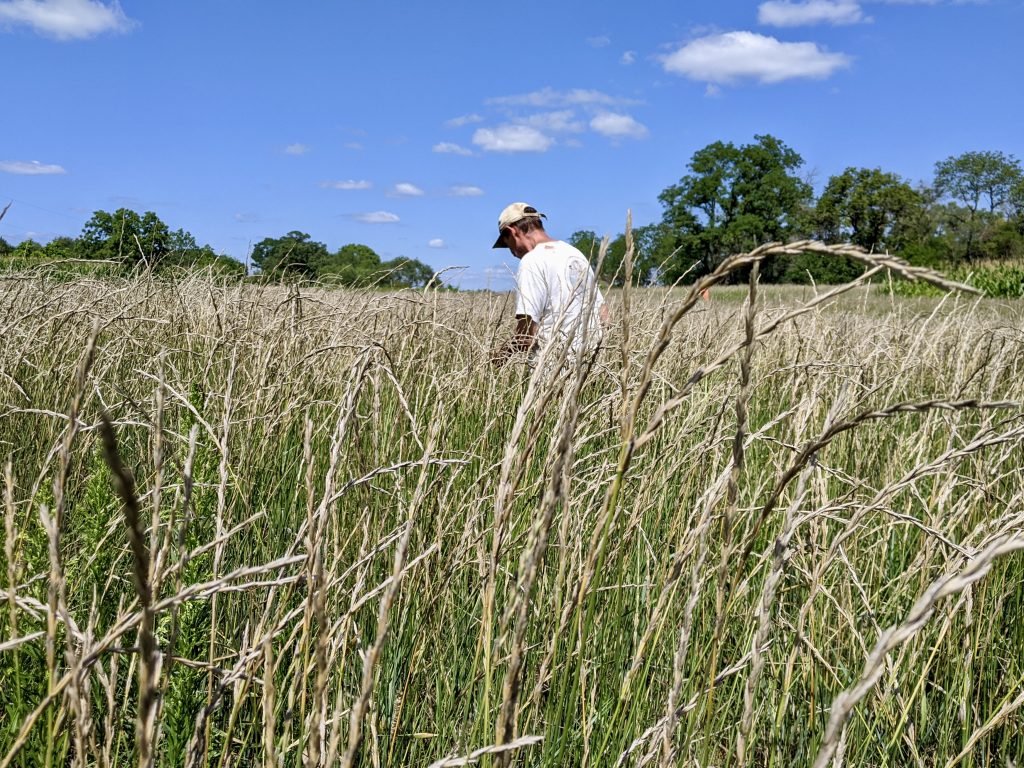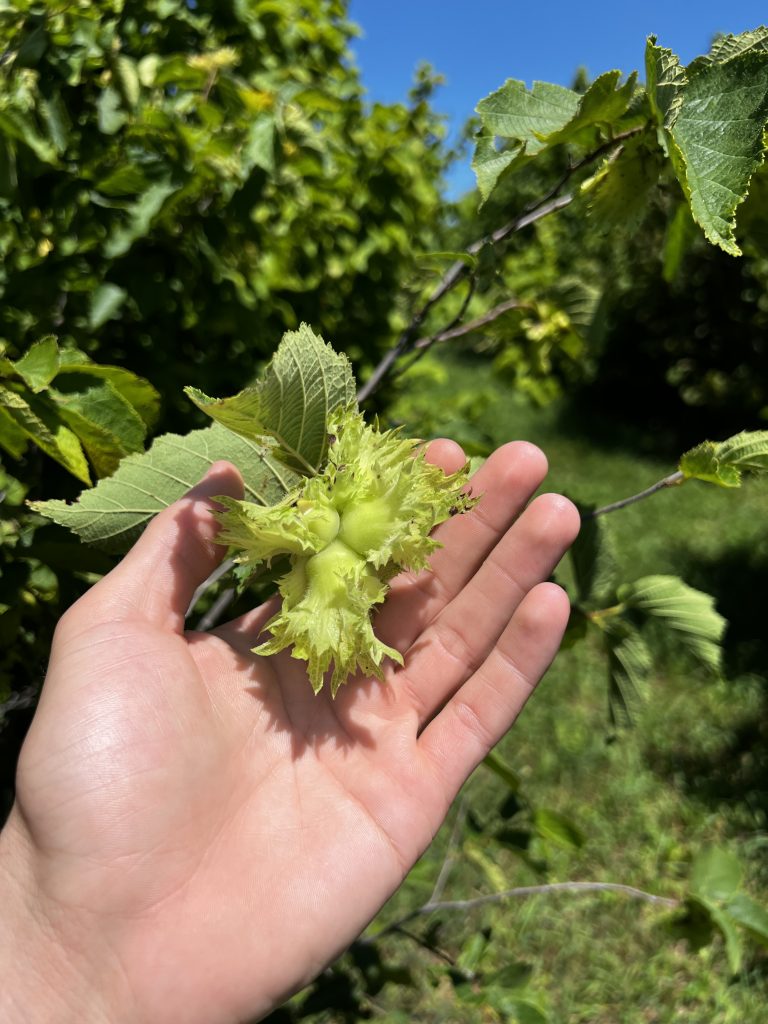Growing climate-smart crops, like kernza, hazelnuts, or aronia, can help build resilience to climate change, increase agricultural productivity and mitigate greenhouse gas emissions. Instead of protecting our environment from agriculture, climate-smart crops allow us to preserve our environment with agriculture.
Kernza
Kernza is a perennial wheatgrass well-suited to Wisconsin’s growing conditions. Most conventional grain crops are annuals, meaning they leave the soil bare for long portions of the year and demand extensive fertilizer application. This can lead to problems with erosion and water contamination from excessive nutrient runoff. Kernza presents a unique solution to these environmental concerns and offers growers profitable grain and forage harvest for multiple seasons.
- Kernza has deep root structure that can extend 10 feet or more into the soil, holding carbon underground and reducing erosion
- After the grain is harvested, leaves and stems from kernza can be used as forage for cattle
- Kernza contains more seeds per grainhead than annual wheat, resulting in higher yields for the farmer
- Kernza has Improved nutritional content. It is high in antioxidants and protien, with 8 times the dietary fiber of whole wheat
- Kernza contains less gluten than wheat
- Kernza is marketable for baked goods (breads, pancakes, crackers, cookies), breakfast cereals, beer, whiskey, ice cream, and more!
Photo Courtesy the Michael Fields Agricultural Institute
Learn more about Kernza from the Land Institute
Hazelnuts
Wisconsin is currently experiencing a growth in hazelnut production. This emerging crop is a native species of shrub well-suited to the practice of agroforestry. Hazelnut is a multi-use crop, the nuts, oils, and flour can be used for a variety of purposes including baked goods, nut butters, edible oils and more. As a perennial crop, hazelnuts provide needed soil structure, require minimal fertilizer input, and hold carbon. The nuts can be mechanically harvested, meaning these shrubs can be grown at scale.
- Hazelnuts can be used for intercropping: diversifying orchards with more than one woody species
- Hazelnuts can be used in alley-cropping: planting annual crops between perennial woody species
- Hazelnuts can be used in silvopasture: planting woody species in rotational grazing fields
- Hazelnuts can be used for buffer zones: planting woody species along sensitive waterways
- Hazelnuts can be used as windbreaks or hedgerows: planting useful crops that create privacy screening from roads, buffer impacts of wind, or simply separate agricultural plots
Learn more about hazelnuts in Wisconsin at the Upper Midwest Hazelnuts website.


